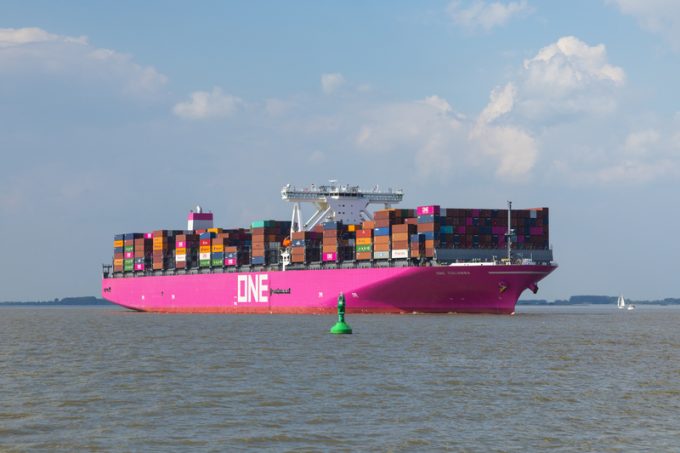Shipping line fortunes may be looking up after a dire fourth quarter
The last three months of 2023 were some of the worst for liner shipping’s finances ...

Japanese carrier Ocean Network Express (ONE) has posted its first quarterly profit since the merger of the container businesses of K Line, MOL and NYK on 1 April last year.
ONE recorded a net profit of $5m in the first quarter of its fiscal year, which ends 31 March 2020, and has upgraded its outlook to a full-year profit of $90m.
The carrier said it had achieved profitability “at a higher pace than estimated”, after taking action to reverse the $586m loss incurred in its first year.
NYK, a 38% equity holder in ONE, said that, “as a whole, the business performance greatly improved”, while 31% shareholder MOL said profitability had been achieved as a result of “the optimisation of cargo portfolio and cost reduction”.
K Line, which also owns 31%, said “freight rate increases” in long-term contracts for the US had contributed to the positive result.
ONE revenue soared 39% in Q1, compared with the same period of 2018, to reach $2.1bn, mainly attributed to a substantial improvement in liftings and vessel allocation load factors.
Utilisation levels on the two major headhaul tradelanes, Asia-US and Asia-Europe, which had both plunged to only 73% in Q1 18, recovered to reach peaks of 95% and 92% respectively in the third quarter. The botched launch of ONE resulted in a significant loss of business in the first two quarters with an estimated $400m negative impact on the bottom line.
Notwithstanding the stabilised liftings reported today, ONE also cited improvements in its cost reduction programme, product rationalisation and reduced spending on port agency and IT costs as all contributing to the turnaround.
It also said freight rates had “improved” in the US, South America and Asia, but had “deteriorated” in Europe. Specifically, ONE said Asia-US headhaul long-term contracts had improved after an earlier assumption that they would be “concluded at the same level”.
However, the Asia-Europe westbound freight market “hovered at the same low level as last year, because supply grew faster than demand”, it said, but added that demand on the route had still been “relatively strong”.
ONE is forecasting a $123m profit in Q2, but a $38m loss in Q3, to give a revised 12-month result of a $90m net profit, up from its previous $85m prediction.
The average price paid for bunker fuel in Q1 was $432 per tonne and ONE expects to pay the same amount for fuel in its second quarter, while its equation for the next six months includes a bunker price of $533 per tonne, which is around $150 higher than the current market price.
ONE is no doubt allowing for the extra cost of the low-sulphur fuel it will need to replenish the tanks of its ships before the IMO’s 0.5% sulphur cap comes into force on 1 January.
Nevertheless, the carrier said, it had “fully explained the issue to our customers” and had already reached agreement with its long-term contracts for recovery via its new bunker surcharge mechanism.
According to Alphaliner data, ONE is the sixth-largest global container carrier, with a total capacity of 1,565,000 teu on a fleet of 215 vessels, 74 of which are owned and 141 chartered-in. It has no new ships on order.
Comment on this article